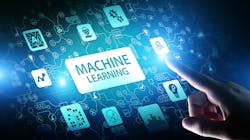How are machine learning and artificial intelligence connected?
What’s the first thing you think of when you see AI/ML? If you immediately went to artificial intelligence modelling language, you’re only half-right.
The ML in this acronym is machine learning, a different way to “program” artificial intelligence, if you will. Aren’t AI and ML the same thing? While there’s an undeniable relationship, there’s a reason for the slash in AI/ML. And, while many people understand the connection between the two, there are those who believe the learning component could be improved.
Artificial intelligence is the ability to imitate human perception and problem-solving; similarly, machine learning takes place much the same way that a human infant learns through experience, continuously honing the ability to make better decisions via trial and error.
Computers, however, are able to use statistics to train algorithms to predict outcomes.
The term, “machine learning,” is credited to Arthur Samuel, who coined it in the 1950s during his work on a program designed to play checkers, which ultimately defeated Robert Nealey in a highly publicized match on the IBM 7094 computer in 1962.
This seems trivial in 2023, as we’ve all certainly played checkers or even chess against a computer at some point, but when Nealey lost to an early AI it was no small feat, to be sure.
The core idea behind machine learning, and subsequently artificial intelligence, is to use the computer’s processing power—which, in 1959, was very limited by today’s standards—to speed up the trial-and-error process.
Human infants, by comparison, learn by experiencing their environments and sometimes need exposure to something only once, according to research from Dr. Lorijn Zaadnoordijk, a developmental cognitive neuroscientist at Trinity College in Dublin, Ireland.
Machine learning uses an artificial neural network, much like the human brain, except in the form of an algorithmic model. As computer scientists and data scientists work together to train AI systems to think like humans, thinkers like Zaadnoordijk present a compelling case for developing machine-learning techniques that more closely resemble the way humans learn through experience, rather than simply leveraging processing speed.
Yes, AI and ML are two sides of the same slash, but they’re not the same thing. Machine learning is a means to develop and improve artificial intelligence.
About the Author
Mike Bacidore
Editor in Chief
Mike Bacidore is chief editor of Control Design and has been an integral part of the Endeavor Business Media editorial team since 2007. Previously, he was editorial director at Hughes Communications and a portfolio manager of the human resources and labor law areas at Wolters Kluwer. Bacidore holds a BA from the University of Illinois and an MBA from Lake Forest Graduate School of Management. He is an award-winning columnist, earning multiple regional and national awards from the American Society of Business Publication Editors. He may be reached at [email protected]

Leaders relevant to this article:

